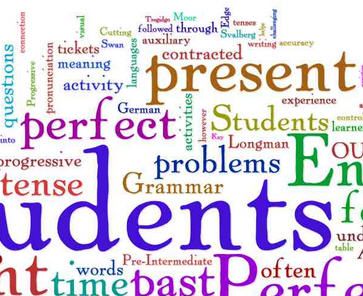
To assist them with this aspect of the English language, dedicate some time and perhaps even an entire lesson to practicing the use of these two words. The more familiar students are with using these words, the better they will do at using them correctly.
How to Proceed
-
1
Warm up
As you have probably been studying present perfect for several lessons, try not to make it the focus of the warm up activity. This will give students a bit of a break as well as a review of other topics. A short game or activity which engages students and requires them to move around the classroom would be an excellent idea. You can conduct an activity such as Chinese Whispers to start off. This will give students some basic pronunciation practice and encourage them to work more efficiently in groups. Alternatively, you could play a game such as Fruit Basket where students have to make a sentence about their weekend or another similar topic which would again give students speaking practice and allow them to share a little bit about themselves.
-
2
Introduce For and Since
Perhaps in past classes you have only introduced and practiced a basic present perfect sentence structure such as “I have played baseball.” In your introduction for this lesson introduce the longer structure using examples such as “I have played baseball for three years.” and “I have played baseball since fourth grade.” Have students volunteer to give a translation of your example sentences and ensure that they understand the difference between the two. Use diagrams on the board to explain that the word for is used when referencing a period of time such as “three years” while since is used when referencing a specific point in the past such as “fourth grade”. This may be hard for students to grasp initially so practice activities are vastly important.
-
3
Practice
Start out by completing some sentences on the board as a class. Ask for volunteers or call on students to decide which word is appropriate for each sentence and when appropriate have students translate sentences as well. Next, have students work individually to complete a worksheet. The first section might have students choose which word best completes a sentence while the second section could ask students to match for and since with appropriate time phrases such as “three years” and “fourth grade”. Check the answers aloud as a class to ensure that students understand when to use each of these words. If students are struggling be sure to provide them with further practice before moving on to the next section or perhaps ask another student to explain the use of each word to the class. Sometimes simply giving another explanation can help students understand a new idea.
-
4
Produce
Using the same worksheet, have a section which asks students to write a few sentences of their own using these two words. Perhaps during the writing section students could be asked to write pairs of sentences where the first one uses for and the second one uses since to say essentially the same thing such as the pair of sentences used in the baseball example above. If this is too challenging for students conduct an activity that is more suitable to their level.
-
5
Review
As a review activity you can start a present perfect sentence and ask students to finish them by supplying a phrase starting with for or since. With small classes, start this activity with all students standing up so that every student needs to complete a sentence before sitting down. For larger classes, you can start with all students standing up but allow each student who completes a sentence to choose either his row or column to sit down so that the activity is kept short.
Determining which of these two words to use in sentences is a common error made by non-native English speakers, even those who are advanced students. Providing plenty of practice activities throughout the course will be the best method of teaching students the correct use of these two words.
Do you have your own method of teaching for/since? Please tell us!
P.S. If you enjoyed this article, please help spread it by clicking one of those sharing buttons below. And if you are interested in more, you should follow our Facebook page where we share more about creative, non-boring ways to teach English.








